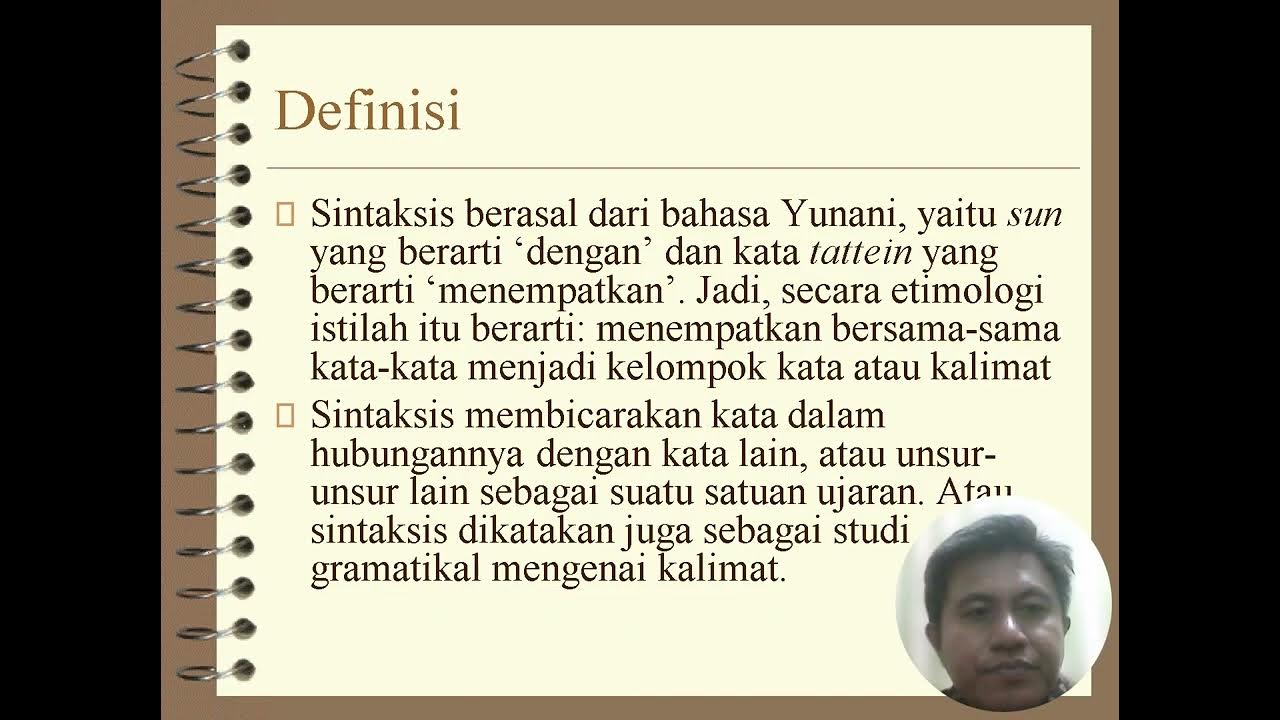Mutammimah al Ajurumiyah 39 (Laa Naafiyah Lil Jins) - Maknawi Institute
Summary
TLDRIn this video, the speaker provides a detailed explanation of complex aspects of Arabic grammar, focusing on syntactical elements such as the use of rafa, nasb, and majrur cases. The lesson explores how various terms function in sentences, with a particular emphasis on specific grammatical constructs and their applications in different contexts. Through clear examples, the speaker highlights the significance of these rules in understanding the Arabic language and offers insights into how to properly use these forms in both theory and practice.
Takeaways
- 😀 The video focuses on detailed explanations of Arabic grammatical rules, particularly regarding 'Isim Ma'rifah' (definite nouns) and 'Isim Nakiroh' (indefinite nouns).
- 😀 'Isim Ma'rifah' refers to nouns with a specific reference, while 'Isim Nakiroh' refers to nouns in a general sense.
- 😀 'Na'at' (adjective) is an essential element of the sentence that modifies nouns and follows specific grammatical cases (raf'a, nasab, jazm).
- 😀 Examples are given to show how adjectives can be either in the nominative (raf'a) or accusative (nasab) case, depending on the sentence structure.
- 😀 The distinction between 'mudhaf' (possessed noun) and non-'mudhaf' is crucial for proper application of adjectives and cases in sentence construction.
- 😀 The speaker explains that the structure of sentences can change depending on whether the adjective is attached to a definite or indefinite noun.
- 😀 Quranic verses are referenced to show practical applications of these grammatical rules in real contexts.
- 😀 Clarity in sentence structure is emphasized, especially in the context of religious texts like the Quran, where precise grammar is critical.
- 😀 There is a focus on the importance of understanding when and how different cases should be applied to adjectives and nouns in sentences.
- 😀 The final takeaway stresses that when applying these rules, the context, especially religious or formal contexts, should be considered for correct interpretation.
Q & A
What is the main topic discussed in the video?
-The main topic of the video is the explanation of the Arabic grammatical rules related to the use of 'mabni' and 'marfu', particularly focusing on sentence structures in Arabic and their application in certain grammatical contexts.
What does the term 'mabni' refer to in Arabic grammar?
-'Mabni' refers to a grammatical construction where a word does not change its form based on its grammatical function. It is fixed in form, even when it appears in different cases.
What is the significance of 'nakiroh' in the script?
-'Nakiroh' refers to an indefinite noun. The script explains the relationship between 'nakiroh' and other elements in sentence construction, particularly in terms of how they affect the grammatical case of the word (e.g., marfu or mansub).
How does the concept of 'rafa' differ from 'nasab'?
-'Rafa' and 'nasab' are two of the grammatical cases in Arabic. 'Rafa' refers to the nominative case, typically used for the subject of a sentence, while 'nasab' refers to the accusative case, usually applied to the object of a verb.
What example is used to demonstrate the difference between 'rafa' and 'nasab'?
-The script uses the example 'laahaula walaaquwwata' to illustrate how the words can either take the 'rafa' (nominative) or 'nasab' (accusative) case, depending on the context and grammatical usage.
What is meant by 'na’at' and how does it function in a sentence?
-'Na’at' refers to an adjective or descriptive word in Arabic that modifies a noun. It must agree with the noun in terms of gender, number, and case. The script provides examples to show how 'na’at' works in different sentence structures.
What is the role of 'mufrod' in Arabic grammar?
-'Mufrod' refers to a singular noun or a word that is not part of a compound structure. The script discusses how 'mufrod' is treated in relation to its grammatical cases and its agreement with adjectives and other sentence elements.
Why is it important to understand the grammatical relationship between 'na’at' and 'ismilak'?
-Understanding the relationship between 'na’at' (adjective) and 'ismilak' (noun) is essential because it helps in determining how adjectives agree with nouns, affecting the sentence's structure, meaning, and grammatical accuracy.
What is the effect of 'vain fasola' in sentence structure?
-'Vain fasola' refers to a separator between elements in a sentence. The script explains how this affects the interpretation and grammatical structure of sentences, particularly when it comes to modifying adjectives or nouns.
What is the final advice given at the end of the video regarding the understanding of Arabic grammar?
-The final advice emphasizes the importance of understanding the key grammatical principles, especially regarding the use of 'na’at', 'ismilak', and 'mabni'. The video encourages viewers to engage with the material thoroughly and asks them to seek clarification through comments if needed.
Outlines

Esta sección está disponible solo para usuarios con suscripción. Por favor, mejora tu plan para acceder a esta parte.
Mejorar ahoraMindmap

Esta sección está disponible solo para usuarios con suscripción. Por favor, mejora tu plan para acceder a esta parte.
Mejorar ahoraKeywords

Esta sección está disponible solo para usuarios con suscripción. Por favor, mejora tu plan para acceder a esta parte.
Mejorar ahoraHighlights

Esta sección está disponible solo para usuarios con suscripción. Por favor, mejora tu plan para acceder a esta parte.
Mejorar ahoraTranscripts

Esta sección está disponible solo para usuarios con suscripción. Por favor, mejora tu plan para acceder a esta parte.
Mejorar ahoraVer Más Videos Relacionados

Al-Muyassar (65) : Majrur dengan Huruf Jerr dan Mudhof - Ustadz M Abduh Tuasikal

Bahasa Arab Mudah - Tanda I'rab pada Isim

Apa bedanya kata Isyriin عشرين dan Isyruun عشرون dalam Bahasa Arab?

Tanda I'rab Rafa Isim dan Fiil - Dhammah, Wawu, Alif dan Nun - علامة الرفع

Sintaksis

Nahwu Jurromiyyah 24 - Isim Majrur - Ustadz Muhammad Abduh Tuasikal M.Sc.
5.0 / 5 (0 votes)
